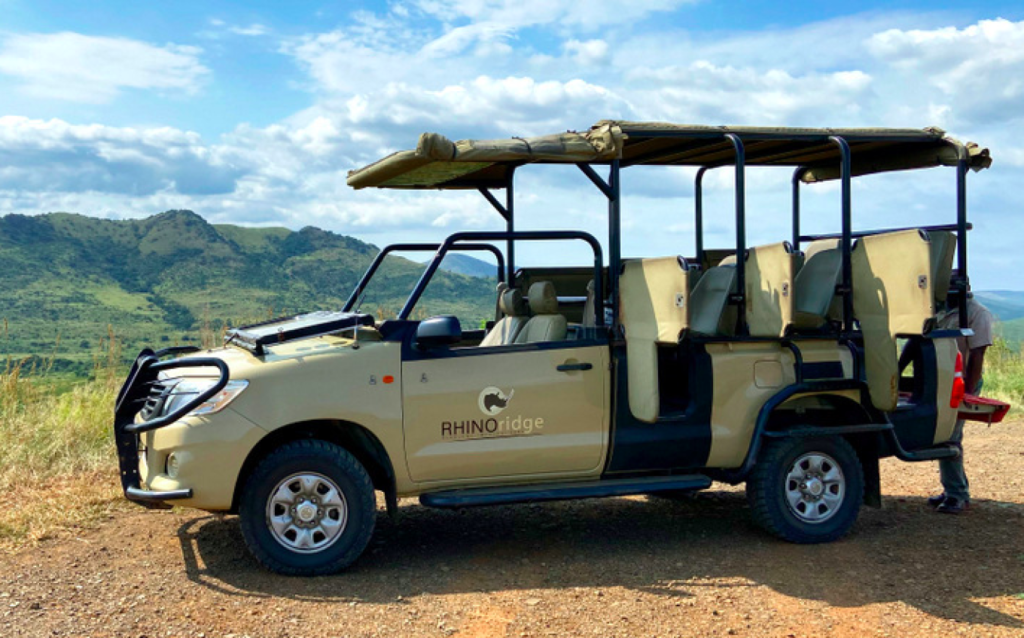For most people, Durban may be unfamiliar. It is the third-largest city in South Africa, home to the country’s largest port, the homeland of the Zulu people, and a gathering place for South Africans of Indian descent.
Pre-Departure Preparation
- Air Tickets
There are many flights to Durban from various South African cities. Search for flights to King Shaka International Airport on South African budget airline websites. Airlines like Kulula, FlySafair, and CemAir operate 3-4 flights daily to Durban. - Car Rental
Public transportation in South Africa is poor, so I recommend renting a car for safety and convenience. It’s often more affordable than Uber or taxis. Choose from companies like Budget, AVIS, or Europcar, based on your budget. The roads in Durban are in good condition, so an economical car will do just fine. However, if you plan to visit nearby safari parks for wildlife viewing, it’s better to rent a 4×4 or SUV. - Hotels
Durban offers various neighborhoods, but locals recommend staying in the Umhlanga area. It’s a 20-minute drive from both the city center and the airport. This area has modern hotels, beautiful beaches, a lively bar street, and is known for being one of the safest parts of the city. - Safari Essentials
- Binoculars
- Sun hat
- Sunscreen (for afternoon use)
- Insect repellent
- Warm jacket (for early mornings)
Our first stop was Umhlanga Beach, which we reached on foot. Today, the wind was quite strong, and because of Christmas, there weren’t many people on the beach. The sea in Durban belongs to the Indian Ocean, and its water is much warmer than the Atlantic in Cape Town. You can swim here all year round.
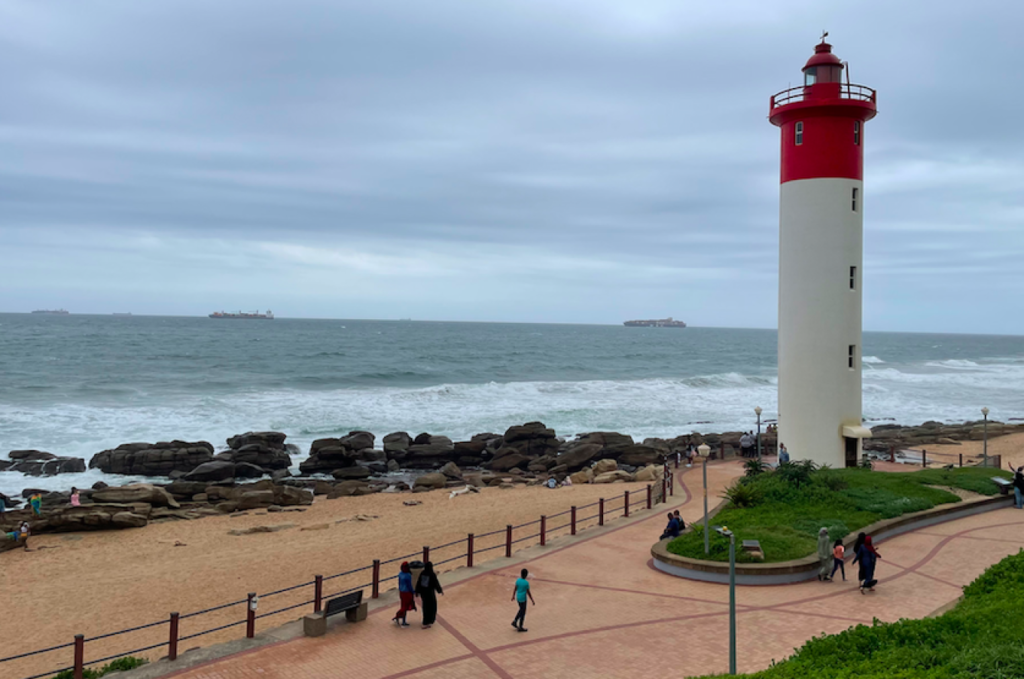
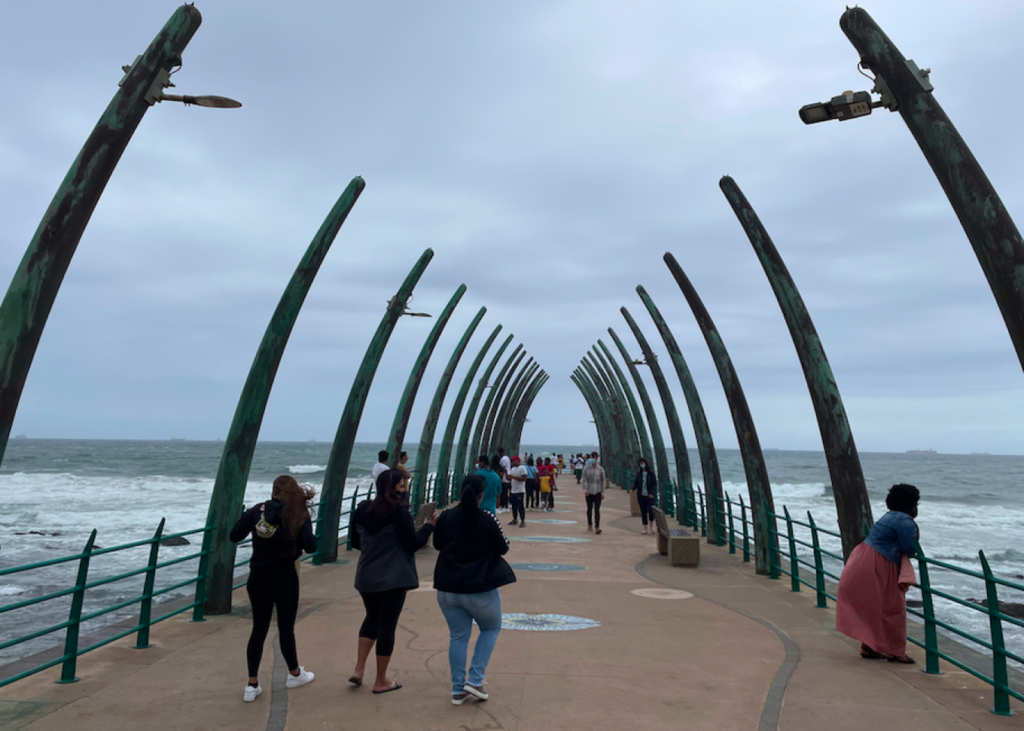
There is also Durban’s famous Whale Bone Pier. After our walk along the beach, we decided to head back to the hotel for a good rest and prepare for the next day’s journey.
On the second day, Boxing Day, it was still a public holiday in South Africa. Traditionally, South African Black people head to the beach on this day (as well as on New Year’s Day). Curious, we wanted to see what a “Black Beach Day” was like. Initially, we planned not to get out of the car and just drive along Durban’s coastal road to experience it. However, we were quite disappointed. There wasn’t the massive crowd we had heard about—just a small number of people playing in the water.
There was a heavy police presence today, controlling access to the coastal road, allowing only small cars through while banning minibuses (a common mode of private transportation used by Black South Africans). So, we found a parking spot, got out, and enjoyed the beauty of the beach.
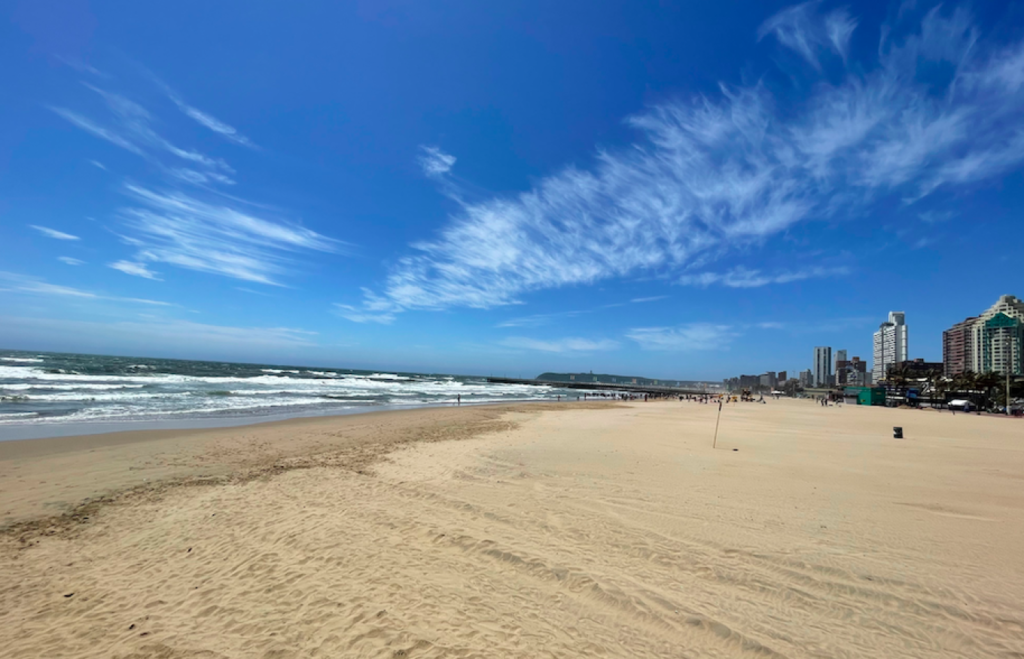

I must say, Durban’s beaches are very clean, with soft, fine sand. Along the coastal road, people enjoy leisurely walks and morning exercise. This place is a paradise for those who love swimming, beach sports, and sunbathing.
It’s just a ten-minute drive from the beach to the Botanic Gardens, the oldest botanical garden in Durban, established in 1849. The garden is dominated by palm trees, with rare plants from all over the world, many of which are centuries old.
One tree in particular caught my attention—its trunk displays rainbow-like colors that change depending on the time of day and the angle of the light. Locals call it the Rainbow Tree, though its scientific name is the Eucalyptus tree, a species of gum tree.
The garden offers different colors throughout the seasons and serves as a popular spot for locals to gather, host music festivals, and run small markets. Admission is free, and there is a parking lot right at the entrance, making it very convenient for visitors.

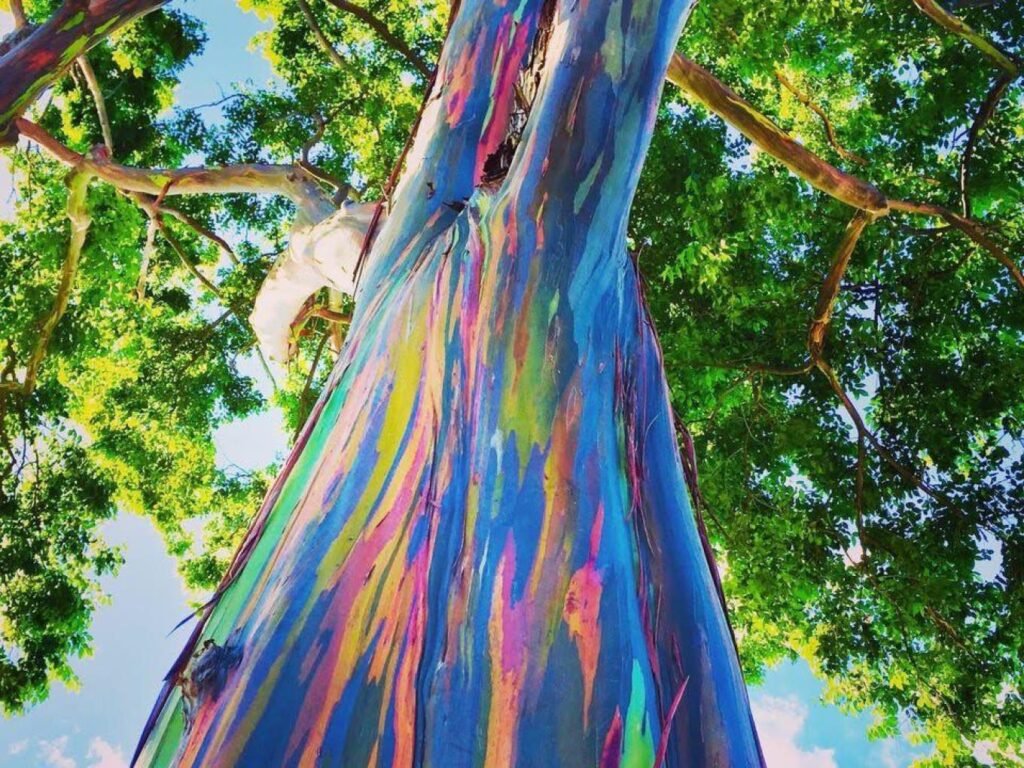
If you have enough time, you can easily spend 2-3 hours here. There are also many bird species and monkeys, which should be quite entertaining for children. At the entrance, you’ll find electric carts available for 100 Rand per cart, with a capacity of four people. A guide accompanies the ride, making it a great value.
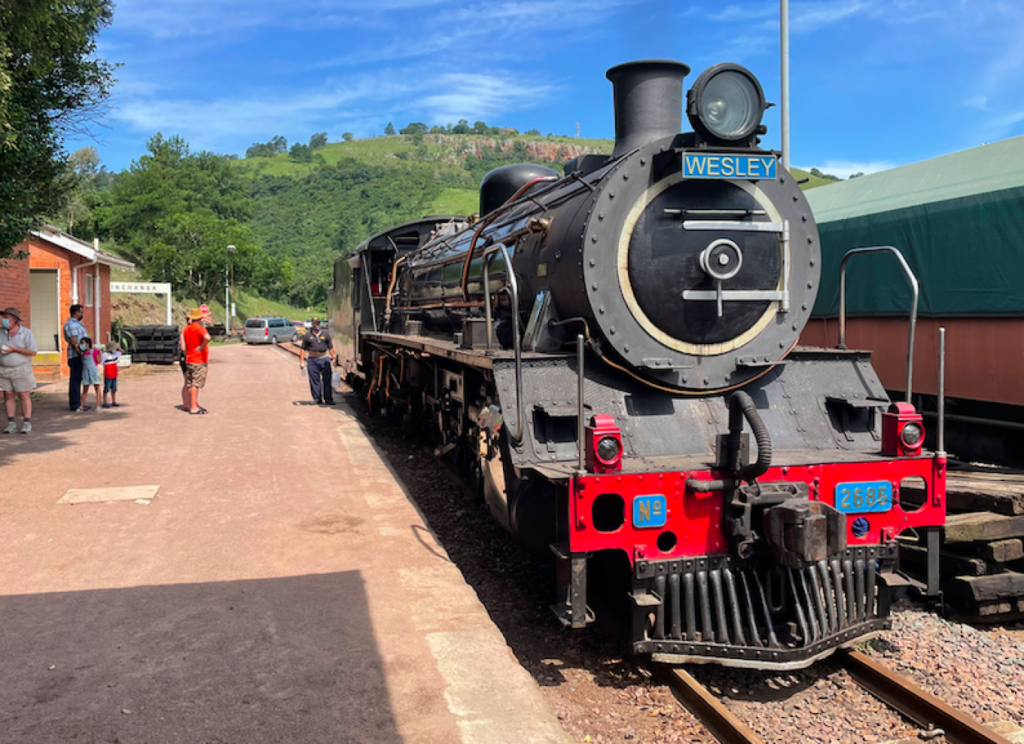
The highlight of the afternoon was the Umgeni Steam Train. This century-old steam locomotive, the Wesley, runs along South Africa’s oldest railway line. A word of advice: tickets for this vintage train must be booked in advance, as it operates only on the last weekend of each month. Additional holiday schedules are announced on the official website.
The reason I recommend this experience is that, for those of us born after the 1980s, we likely never had the chance to ride a steam train—just like the one to Hogwarts in Harry Potter. Additionally, the scenery along this railway is stunning, winding through mountains and passing small local villages. The journey takes one hour one way, with no stops along the route, ensuring a safe trip.
What moved me the most was the dedication of the volunteers. Umgeni is a non-profit, non-governmental organization, and all expenses—such as maintenance of the locomotives, railway, and stations, as well as operating costs and volunteer wages—are funded entirely by ticket sales and donations. Driven by their love for steam trains, these retired seniors and younger volunteers have kept this unique travel experience alive.
The train departs from Umgeni Station, about a 45-minute drive from Durban. There is designated tourist parking at Kloof Civic Hall, with volunteers on-site to guide you—it’s easy to find. Just cross the road from the parking area, and you’ll reach the train station platform.
When you arrive, make sure to exchange your reservation for boarding tickets with the volunteers, as tickets will be checked on the train. There are four carriages in total, and your assigned carriage will be indicated on the boarding ticket.
Boarding begins 15 minutes before departure. The carriages are decorated in a vintage style, dating back over a century, including the toilets. I recommend purchasing food and drinks on the train—they are cheaper than in restaurants, and the proceeds help support the volunteers.


All the windows on the train can be opened, allowing passengers to enjoy the scenery and get a close look at the steam locomotive. Whenever the train crosses a road intersection or enters a tunnel, the engineer blows the whistle.
After an hour-long journey, the train arrives at Inchanga Station, the final stop. This station, established in 1895, was once a refueling and rest area for steam locomotives and passengers. Between 1880 and 1892, beyond this point lay a poorly constructed viaduct.
In bad weather, such as when wind speeds exceeded 15 km/h, all passengers were required to disembark and walk across the viaduct. The train would then cross at a cautious speed of 10 km/h with a special driver at the helm. On either side of the wooden viaduct stood a bucket filled with water. The rule was that the water must remain steady as the train crossed—any spill would result in a hefty fine for the engineer.
This practice ended in 1892 when a new railway line was built to bypass the canyon, leading to the dismantling of the Inchanga Viaduct.
During the two-hour stop at Inchanga Station, you can visit a steam train history museum, which is maintained and guided by volunteers (free of charge). You can also explore the flea market at the station and try some local snacks.
At this time, the steam locomotive is open to visitors as well. You can step into the driver’s cabin or even climb onto the engine. However, safety comes first—the coal-fired engine is very hot, so be cautious while exploring.
Afterward, the locomotive returns to the starting station in reverse, which is quite interesting to watch. On the way back, volunteers will go through each carriage collecting donations. It’s recommended to contribute if you can—these volunteers put in a lot of effort to keep this experience alive.
uShaka Marine World
To be honest, uShaka Marine World was a bit disappointing. Although it is advertised as the largest marine park in Africa, it didn’t offer many surprises—just an average experience. My suggestion is that families with children might consider spending half a day here, enjoying the dolphin and seal shows and exploring the aquarium.
The park is divided into different zones. The ticket for the aquarium and shows is called Sea World, priced at 157 Rand. There is another section called Wet ‘n Wild, also 157 Rand, which offers swimming pools and water slides. Make sure to specify which ticket you need, as buying the wrong one means you’ll miss out on the shows.
On holidays, they increase the number of shows, with performances at 10:00, 11:30, 13:30, and 15:00.


Hluhluwe iMfolozi Park
Rhino Ridge is the only four-star safari hotel within this nature reserve that offers an all-in-one experience with accommodation, meals, and activities.
The drive from Durban to the park’s entrance at Memorial Gate takes about three hours. From there, it’s another hour to reach the hotel. The route is a mix of asphalt and dirt roads, so it’s recommended to rent a larger vehicle. Smaller cars can manage the dirt roads, but only if it’s not raining (you can imagine how tricky those roads get in the rain).
Check-in at the lodge starts at 1:00 p.m., followed by lunch at 2:00 p.m., a safari at 4:00 p.m., and dinner after 7:00 p.m. The next day, there is an early morning safari at 6:00 a.m., with breakfast served at 9:00 a.m. Rhino Ridge offers meals as part of the package. However, if you stay at other lodges in the reserve, you’ll need to either cook your own food or purchase meals at the camp, similar to the setup in Kruger National Park.
Be sure to stock up on food and drinks before heading to other lodges. Also, note that safaris at other lodges are charged separately and can be booked on-site, usually costing around 420 Rand per trip.
At the entrance of the reserve, you’ll need to park your car and walk to the reception to obtain your entry permit. The reception staff will ask for the following documents: a South African ID or passport, proof of hotel reservation, driver’s license, and vehicle information.
If you’re not staying overnight in the reserve, the entry fee is R132 per day for South African citizens and R265 per day for non-citizens. For those staying inside the reserve, the inclusion of the entry fee depends on the lodge. In our case, Rhino Ridge covered the entry fee.
